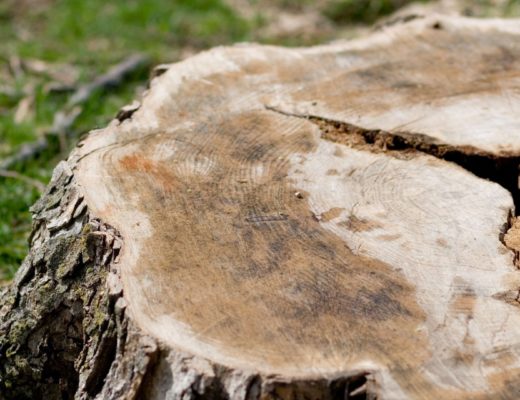Tree health is an important aspect of tree care. There are numerous reasons why a tree may look unhealthy including factors such as drought, disease, invasive species, pests, and improper care. Distinguishing the difference between a pest infestation or tree stress can be challenging when many of the symptoms look similar. However, knowing what species your tree is and whether there are known pests or diseases to that species will help narrow down possible threats.
The end of the summer is a great time to check trees for pests and disease. August is tree check month, an annual campaign to check for the Asian Longhorned beetle (ALB), however it’s also a fitting time to check for other pests. Spending 10 minutes of your day to check trees for signs of damage can help save your trees, and your wallet.
Disease outbreaks are often seasonal, regional, and species specific. Because of the numerous factors that impact a tree’s health, infestations and disease will vary from location to location. Identifying signs of common diseases or pest outbreaks are important so that you know how to treat infected trees.
What are possible pests to check for?
There are hundreds of pests and diseases killing millions of trees across the country. These are a few common infestations overtaking trees:
- Asian Longhorned Beetle
- Cedar Rusts
- Dutch Elm Disease
- Emerald Ash Borer
- Pine Beetle
- Thousand Cankers Disease
Read How to Identify Tree Ailments
How do I check for signs of pests?
Signs of pests will vary from tree to tree and the type of infestation. One of the first visible signs of pests will show on the leaves. Symptoms of an infestation are also visible on bark, branches and twigs. Here are a few signs that your tree will show if it is infested:
- Leaves: check for damage, discoloration, sudden thinning foliage, borer holes, and abnormal leaf sizes.
- Branches & trunk: check for branch growth, if growth is less than previous years there may be a disease or pest present. Other symptoms of pests include holes and frass on the trunk, and lifting roots.
Examine surrounding plants, if the symptoms you observed on your tree are visible on multiple specimens of different species, you could be looking at a different problem entirely than an insect or disease.
What do I do if my tree is infested?
- Make note of what you found, where you saw it and take a photo, if possible.
- Also, try to capture the insect. Place it in a container and freeze it. Doing so will preserve it for easy identification by the USDA.
- Finally, report your findings to your state department of agriculture.
Watch the video below to learn how to check for pests.
What tree questions do you want answered? Comment below!




Great article! This was just the info I was needing. It’s good to know what to look with tree disease and the difference between disease and stress!
Hello Andrea,
I was also faced the same problems in past few months back. then i Listen about Arborist Tree Service on Demand
there Products are very useful and effective you can also try this for your Maples i am sure that you got solution of your problems
What is thew best way to suspend a swing from a tree limb ? ( eg ; eye screw , encirculing ring , cable or rope .laying pole between adjacent trees limbs ,. with least impact on tree ? Also best way to support a 3 topped tree from splitting ( eg; eyescrews/ cable / chain , loop around the 3 tops ( eg; fire hose , cable , rope , chain ))
Thank you.
I am concerned about our tallest trees in Connecticut. It appears to me that after every decade of my life, I see fewer Oaks and Maples which are most cherished trees. Every time a new house goes up, the land is clearcut. The strong winds we have experienced this year has left us with many broken and downed tall trees.
My theory is that we may be able to save these tall, proud trees by doing a twice-yearly check for an invasive vine named Oriental Bittersweet. Many gardeners love the look of this vine as it wraps itself around the Oaks and Maples, strangling them, creating a canopy of leaves that shuts out the light. Oh yes, it is a very pretty but bittersweet vine. We love it because of the berries that supply food for the birds. We love it because it develops such beautiful colors in the fall. This vine is prevalent along our roads/highways and abandoned lots. The residents of Connecticut need to be educated about the adverse effect of this vine. I see many trees surrounded and dying top down. These are the trees that crack or become uprooted in our storms. These falling trees are huge and killing them by doing nothing about this vine puts all our homes and residents in danger. Another “tree” I see growing very well around here is the sumac. It becomes a very inferior tree. We should weed them out and plant our White Oaks and Maples we so appreciate. They are our New England heritage.
My cousin lives in crete,I’ll. And in her backyard she has a lot of trees,one is a rust looking ornamental it’s leaves has holes ,the tree is about 30ish feet tall,she’s been on this property about 3 months,it has a n irrigation system,she doesn’t know how to turn on. The ground dirt is very dry,walking across the grass feels like straw
Andrea, I owned and operated a large Pest Control Company in western Oregon. Carpenter Ants – – Yuck! We specialized in the irradiation of them. Go out at 10 or 11 PM because they are most active at that time and see if you can locate where they are coming from or traveling to. Unless the tree is hollow and rotten it is unlikely they are infesting the tree(s). Carpenter Ants will live in wood piles, the walls of homes, attic insulation, logs, landscaping timbers, etc.. The ONLY way to get rid of them is use a insecticide. All the magic wands in the world will not work. I recommend a product with the name of Tempo 20 WP (Wettable Powder). Very safe to people and pets and really works. It’s a restricted product to be used by only a licensed applicator. Hope I’ve helped you.
What do you use to get ride of pine beetles? HELP!!!
Generally trees are treated before infestation hits as a proactive approach. If your tree has already been infested, it may be best to remove it to prevent pine beetles from spreading to other trees. We encourage you to contact a local arborist to examine your tree and see if it can be saved. Best of luck!